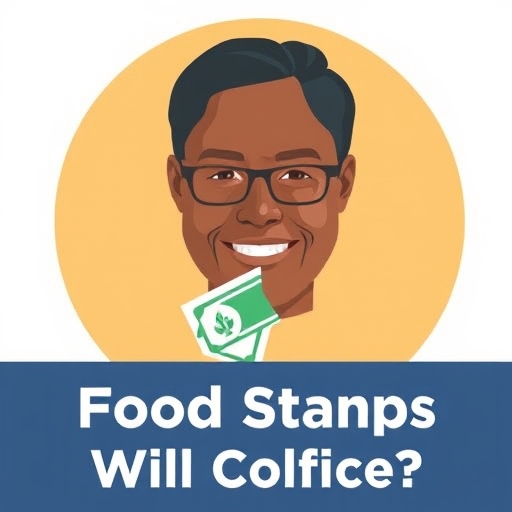Why Are College Students So Liberal?
The political landscape in the United States has undergone significant changes over the decades, particularly among younger generations. College students, in particular, have garnered a reputation for leaning liberal. This article explores the reasons behind this trend, examining societal influences, educational environments, and psychological factors that shape the political ideologies of college students.
Understanding the Liberal Shift
Historical Context
To fully grasp why college students tend to lean liberal, it’s essential to consider the historical context. The late 20th century and early 21st century saw significant social movements, including:
- Civil Rights Movement: Advocating for racial equality and justice.
- Women’s Rights Movement: Fighting for gender equality and reproductive rights.
- LGBTQ+ Rights Movement: Pushing for the recognition of same-sex relationships and anti-discrimination laws.
- Environmental Movement: Raising awareness about climate change and advocating for sustainable policies.
- Increased Diversity: More students from various ethnic, racial, and socioeconomic backgrounds attend college.
- Global Perspective: Exposure to international cultures and ideas often promotes a more liberal worldview.
- Faculty Political Leanings: Studies have shown that college faculty members tend to lean left. This can influence students through:
- Course content that emphasizes social justice.
- Discussions that encourage critical thinking and questioning of traditional norms.
- Liberal Arts Education: Many colleges emphasize critical thinking, ethics, and social responsibility, which can lead students to adopt more liberal views.
- Diverse Perspectives: Courses that explore various cultural and political ideologies can challenge students to reconsider preconceived notions.
- Exposure to Diverse Opinions: Social media platforms expose students to a wide range of opinions and perspectives, often highlighting liberal viewpoints.
- Viral Activism: Campaigns and movements that spread quickly online can galvanize student activism and promote liberal causes.
- Openness to Experience: Many liberal individuals score higher on measures of openness, indicating a willingness to embrace new ideas and experiences.
- Empathy: A strong sense of empathy often correlates with liberal ideologies, as students may feel compelled to advocate for marginalized groups.
- Climate Change: Many students are passionate about advocating for policies that address environmental issues.
- Racial Justice: Movements like Black Lives Matter find strong support among college students.
- Gender Equality: Issues surrounding reproductive rights and gender discrimination remain focal points for student activism.
- Political Clubs: Organizations such as College Democrats and LGBTQ+ alliances provide platforms for students to engage in political discourse and activism.
- Service Organizations: Groups focused on community service often emphasize social responsibility and equity.
- Increasing Participation: Young voters are becoming more engaged in political processes, influencing elections and policy decisions.
- Changing Norms: The prevailing liberal views among younger generations may challenge established norms and lead to broader societal changes.
- Student Debt Crisis: Many college students are burdened by debt, which can lead to support for policies aimed at reforming education financing.
- Job Market Dynamics: Economic instability may drive students to advocate for progressive policies that promote job creation and economic equity.
These movements have profoundly influenced college curricula and student activism, fostering a liberal ideology that champions equality, justice, and progressive change.
Demographics of College Students
The demographic makeup of college students has changed over the years. A more diverse student population often aligns with liberal values, as these groups frequently advocate for social justice issues that resonate with a progressive agenda.
Factors Influencing Liberal Ideologies
Educational Environment
The college environment significantly shapes students’ political views. Several factors contribute to this phenomenon:
Faculty Influence
Curriculum and Course Offerings
Social Media and Information Access
The rise of social media has transformed how students engage with political ideas:
Psychological Factors
Psychological research suggests that certain traits may predispose individuals to liberal beliefs:
The Role of Activism
Student Activism on Campus
College campuses have long been hotbeds for activism, and this trend continues today. Key areas of activism include:
Organizations and Clubs
Colleges often host a variety of student-led organizations that promote liberal values:
Comparison of Political Ideologies Among Students
| Political Ideology | Key Characteristics | Examples of Associated Issues |
|---|---|---|
| Liberal | Emphasis on social justice, equality, and environmental protection | LGBTQ+ rights, climate change, healthcare for all |
| Conservative | Focus on individualism, tradition, and limited government intervention | Tax cuts, gun rights, immigration control |
| Moderate | Combination of liberal and conservative views | Pragmatic approaches to social and economic issues |
The Future of Political Ideologies in Higher Education
Long-term Trends
As college students graduate and enter the workforce, they often retain their political beliefs. This retention can shape future political landscapes, as:
The Impact of Economic Factors
Economic conditions can also influence political ideologies. For example:
Conclusion
The liberal leanings of college students can be attributed to a combination of historical, educational, social, and psychological factors. As these students engage with diverse viewpoints and become active participants in societal movements, they help shape the future political landscape. Understanding these influences is essential for grasping the evolving nature of American politics and the role that education plays in fostering liberal ideologies.
FAQ
Why do college students lean liberal?
College students often lean liberal due to factors such as exposure to diverse perspectives, progressive curricula, social media influence, and a greater emphasis on social justice.
How do faculty members influence student ideologies?
Faculty members, who generally lean left, can influence students through course content that emphasizes critical thinking, ethics, and discussions about social issues.
Is the trend of liberalism among college students new?
While college students have historically engaged in progressive movements, the current trend reflects the ongoing evolution of societal values and the increasing diversity of the student population.
Will college students’ political views change as they get older?
While some studies suggest that individuals may become more conservative as they age, many college students retain their liberal views, especially if they continue to engage with progressive communities and issues.
What role does social media play in shaping political beliefs?
Social media serves as a platform for the rapid exchange of ideas, often highlighting liberal viewpoints and facilitating activism, which can strongly influence students’ political beliefs.





